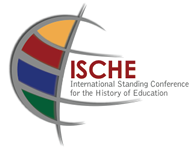| Deutsch | Español | Francais |
For thousands of years Anatolia, especially Istanbul, has been the meeting and living point for different cultures. Culture can be defined simply as a society’s way of life and way of thinking. Cultural elements, such as language, religion, symbols and routines interact through wars, migrations, discoveries, travelers, merchants, and education. Educational institutions, educators, and education materials are the most effective cultural transfer agents.
ISCHE 37 will be held in Istanbul in 2015 on the theme of ‘Culture and Education’. The purpose of this conference is to examine the relations between education and culture in the historical process. In the conference answers of following questions will be addressed: What is the relationship between culture and education? What are the roles of educational reforms and educational borrowing in the cultural changes? What are the roles of educational institutions, educators, and educational materials in culture formation and transformation? How have education and elements of culture such as language, religion, symbols, and routines influenced each other throughout history?
The conference sub-themes are as follows:
- a. Cultural paradigms and education: Different purpose, importance and value of education according to culture; individualist or collectivist cultural values and effect of these values on education through the centuries; perception of concepts such as hierarchy, equality, freedom, democracy in different cultures and transferring these concepts through education; role of education in cultural changes; accepted and rejected educational elements as a result of interaction of culture; education borrowing, etc.
- b. Agents of intercultural interaction: pioneer educators of cultural exchange; educational organizations and institutions, teachers’ associations, educational journals, the media, international organizations, etc.
- c. Language and education: Language of instruction in Ancient-Medieval-Modern Age; effects of instruction language on various cultures; instruction language and culturing; development of mother tongue education and the pioneer individuals and institutions; language reforms and reflections on education, foreign language education and cultural interaction, etc.
- d. Religion and education: Temple education in Early Mesopotamia and Egypt; education in Ancient China, India and Turkey; early religious Jewish education; establishment of Christian education theory, organization, and schools in Antioch, Alexandria, Rome; cathedral schools, universities and scholastic education; Islamic education and madrasah; process of transition to lay education; perception of secular education in different cultures; cultural change and laity, secular education, etc.
- e. Symbols, heroes, stories, and myths: From the historical perspective, power symbols such as the administrator’s or teachers’ room; school and classroom design; meaning of using symbols in the education environment such as flag, cross, crescent, tughra, star, poster, badging; use of symbols, myths and stories about people and events conveying a message about what is valued in the culture; etc.
- f. Rituals and routines: Flag ceremonies, morning ceremonies, reciting a pledge or national anthem; national holidays and special day celebrations and other events which became a tradition or habit more than a necessity; how educational rituals and routines occurred throughout the centuries, and how rituals and routines constructed culture and values through education, etc.

